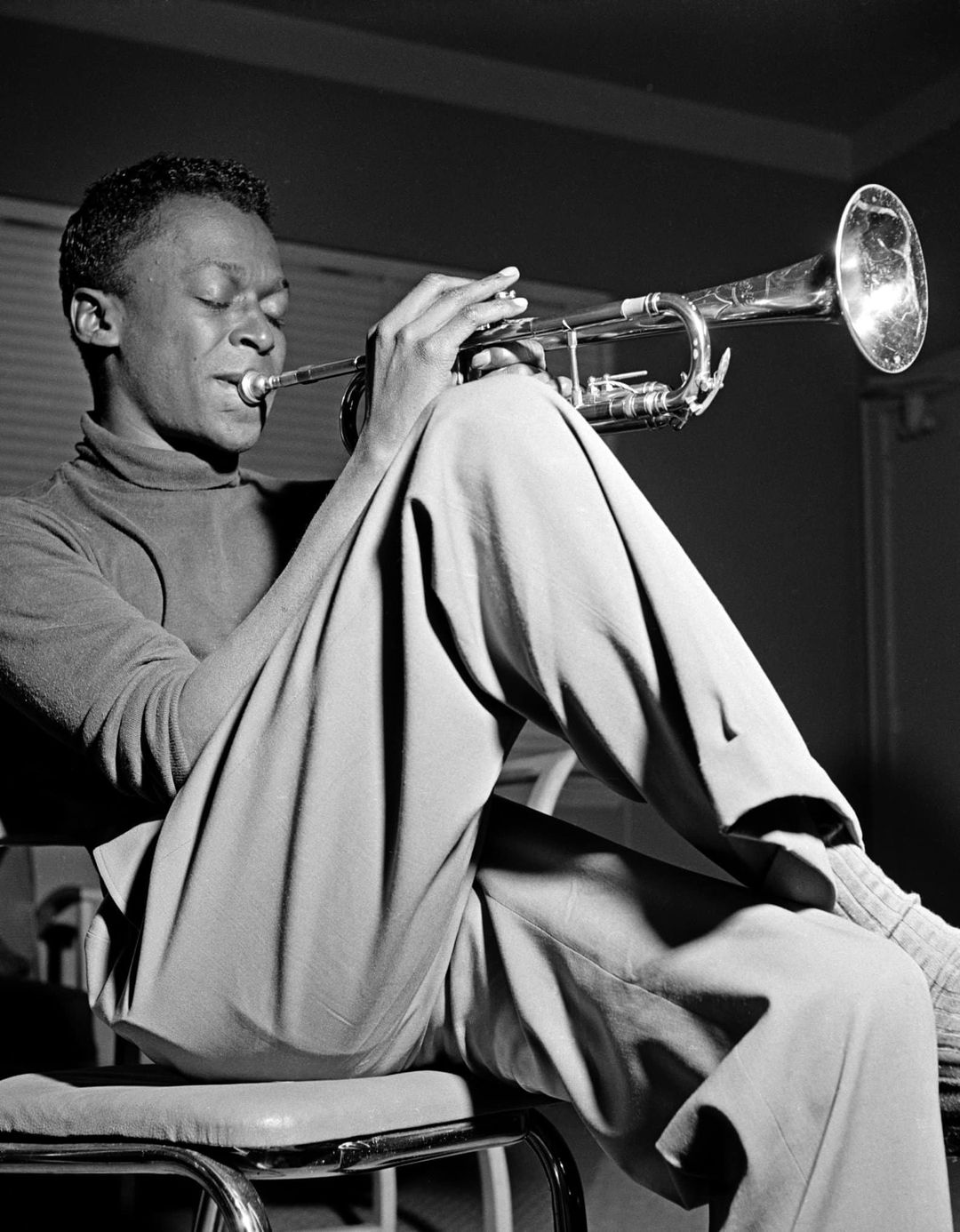Blog
Arthur Hoag chanced upon this unusual extragalactic object. On the outside is a ring dominated by bright blue stars, while near the center lies a ball of much redder stars that are likely much older. Between the two is a gap that appears almost completely dark. How Hoag’s Object formed, including its nearly perfectly round ring of stars and gas, remains unknown. Genesis hypotheses include a galaxy collision billions of years ago and the gravitational effect of a central bar that has since vanished. The featured photo was taken by the Hubble Space Telescope and reprocessed using an artificially intelligent de-noising algorithm. Observations in radio waves indicate that Hoag’s Object has not accreted a smaller galaxy in the past billion years. Hoag’s Object spans about 100,000 light years and lies about 600 million light years away toward the constellation of the Snake (Serpens). Many galaxies far in the distance are visible toward the right, while coincidentally, visible in the gap at about seven o’clock, is another but more distant ring galaxy.
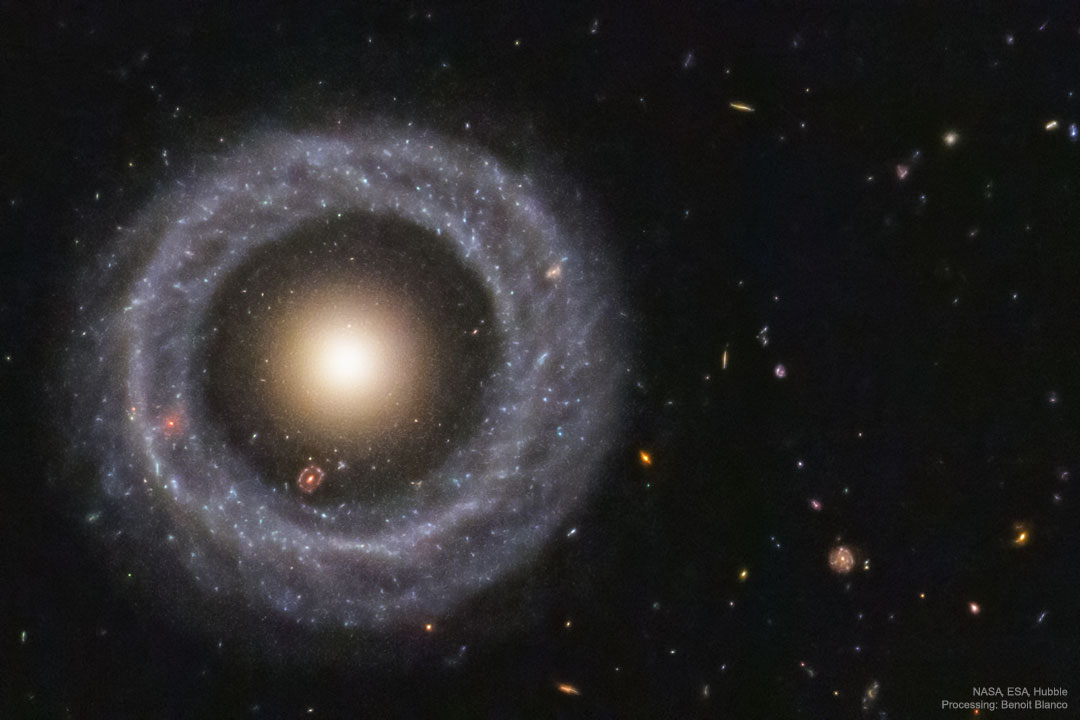
more...
Veronica “Randy” Crawford (born February 18, 1952 Macon, GA) is a retired American jazz and R&B singer. She has been more successful in Europe than in the United States, where she has not entered the Billboard Hot 100 as a solo artist. However, she has appeared on the Hot 100 singles chart twice. The first time was in 1979 as a guest vocalist on the Crusaders‘ top-40 hit “Street Life“. She also dueted with Rick Springfield on the song “Taxi Dancing”, which hit number 59 as the B-side of Springfield’s hit “Bop Til You Drop”. She has had five top-20 hits in the UK, including her 1980 number-two hit, “One Day I’ll Fly Away“, as well as six UK top-10 albums. Despite her American nationality, she won Best British Female Solo Artist in recognition of her popularity in the UK at the 1982 Brit Awards. In the late 2000s, she received her first two Grammy Award nominations.
more...Irma Thomas (Lee; born February 18, 1941) is an American singer from New Orleans. She is known as the “Soul Queen of New Orleans”. Thomas is a contemporary of Aretha Franklin and Etta James, but never experienced their level of commercial success. In 2007, she won the Grammy Award for Best Contemporary Blues Album for After the Rain, her first Grammy in a career spanning over 50 years.
Born Irma Lee, in Ponchatoula, Louisiana, United States, she was the daughter of Percy Lee, a steel chipper, and Vader Lee, who worked as a maid. As a teenager, she sang with a Baptist church choir. She auditioned for Specialty Records at the age of 13. By the time she was 19, she had been married twice and had four children. Keeping her second ex-husband’s surname, she worked as a waitress in New Orleans, occasionally singing with bandleader Tommy Ridgley, who helped her land a record deal with the local Ronlabel. Her first single, “Don’t Mess with My Man”, was released in late 1959, and reached number 22 on the US Billboard R&B chart.
more...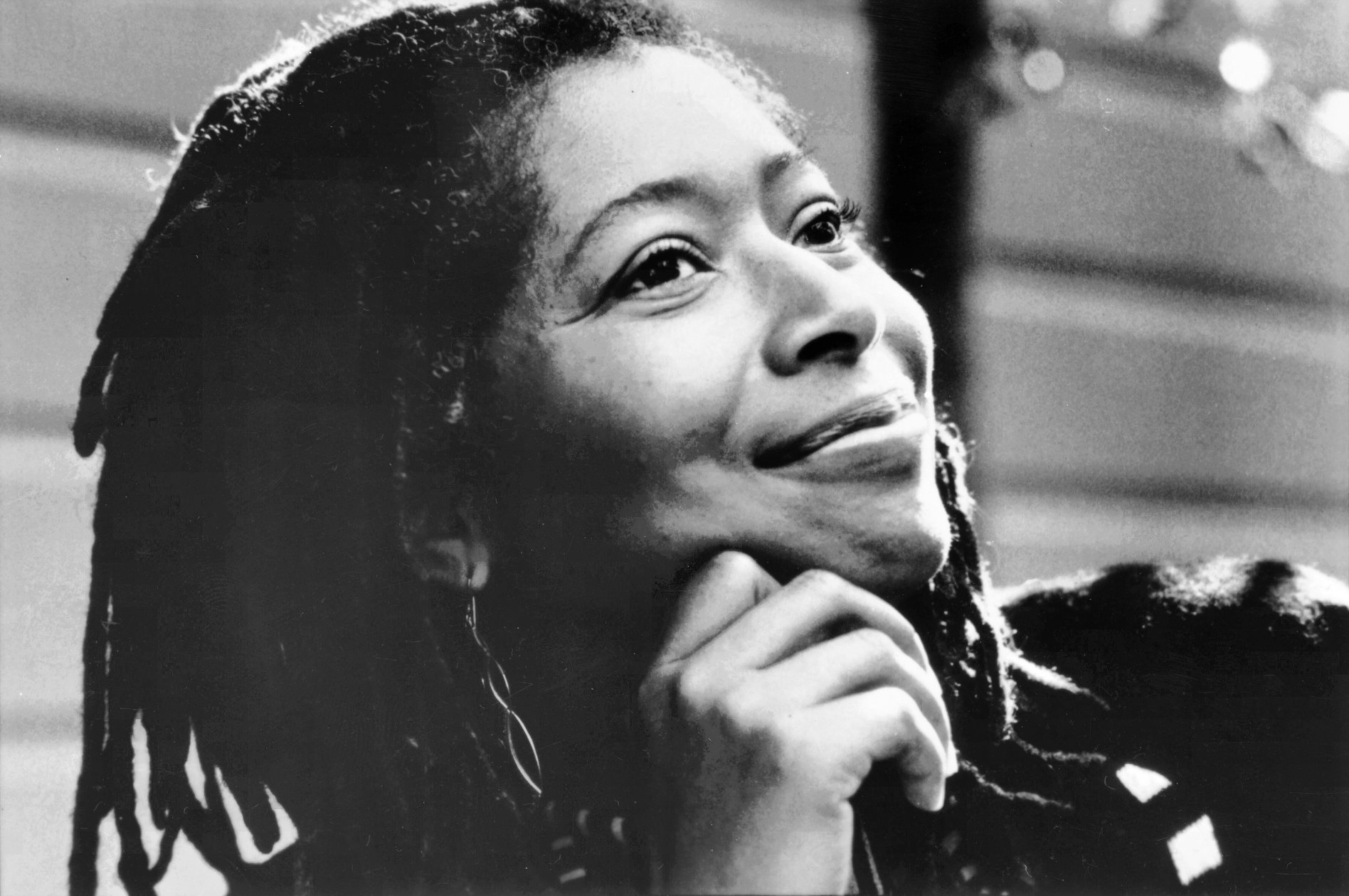
Heading for its next perihelion passage on April 21, Comet 12P/Pons-Brooks is growing brighter. The greenish coma of this periodic Halley-type comet has become relatively easy to observe in small telescopes. But thebluish ion tail now streaming from the active comet’s coma and buffeted by the solar wind, is faint and difficult to follow. Still, in this image stacked exposures made on the night of February 11 reveal the fainter tail’s detailed structures. The frame spans over two degrees across a background of faint stars and background galaxies toward the northern constellation Lacerta. Of course Comet 12P’s April 21 perihelion passage will be only two weeks after the April 8 total solar eclipse, putting the comet in planet Earth’s sky along with a totally eclipsed Sun.
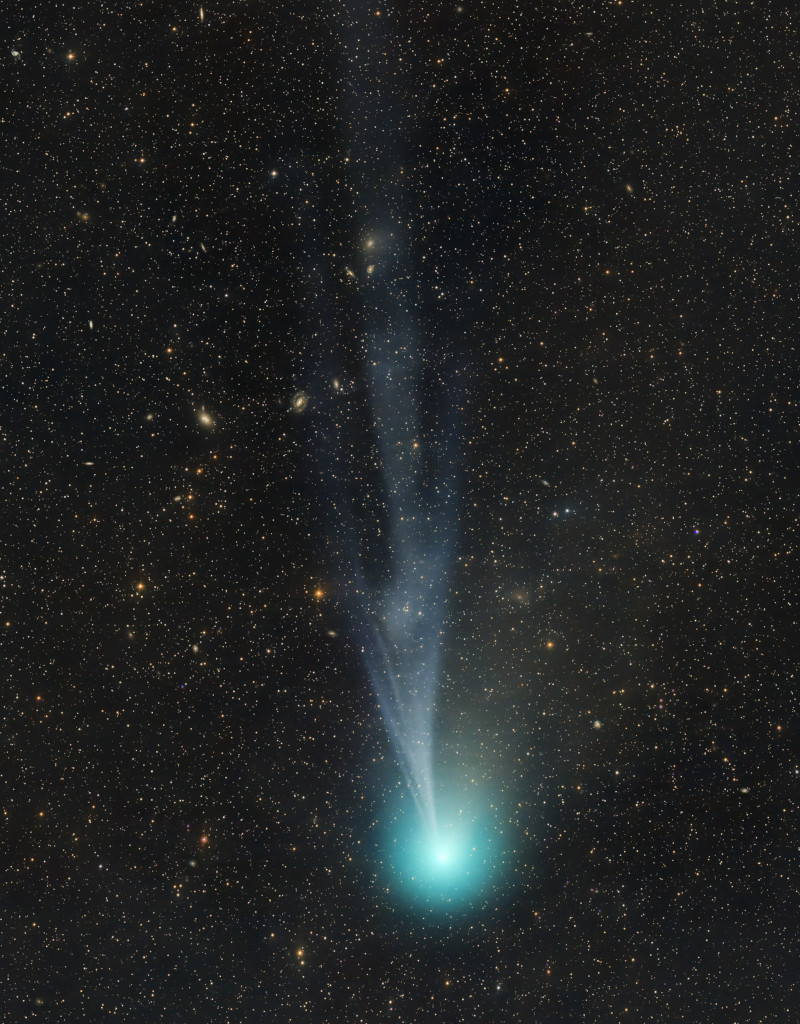
Jeremy Webster “Fred” Frith (born 17 February 1949) is an English multi-instrumentalist, composer, and improviser.
Probably best known for his guitar work, Frith first came to attention as one of the founding members of the English avant-rock group Henry Cow. He was also a member of the groups Art Bears, Massacre, and Skeleton Crew. He has collaborated with a number of prominent musicians, including Robert Wyatt, Derek Bailey, the Residents, Lol Coxhill, John Zorn, Brian Eno, Mike Patton, Lars Hollmer, Bill Laswell, Iva Bittová, Jad Fair, Kramer, the ARTE Quartett, and Bob Ostertag. He has also composed several long works, including Traffic Continues (1996, performed 1998 by Frith and Ensemble Modern) and Freedom in Fragments (1993, performed 1999 by Rova Saxophone Quartet). Frith produces most of his own music, and has also produced many albums by other musicians, including Curlew, the Muffins, Etron Fou Leloublan, and Orthotonics.
He is the subject of Nicolas Humbert and Werner Penzel’s 1990 documentary Step Across the Border. Frith also appears in the Canadian documentary Act of God, which is about the metaphysical effects of being struck by lightning. He has contributed to a number of music publications, including New Musical Expressand Trouser Press, and has conducted improvising workshops across the world. His career spans over four decades and he appears on over 400 albums, and he still performs actively throughout the world.
more...Boniface Ferdinand Leonard “Buddy” DeFranco (February 17, 1923 – December 24, 2014) was an Italian-American jazz clarinetist. In addition to his work as a bandleader, DeFranco led the Glenn Miller Orchestra for almost a decade in the 1960s and 1970s.
Born in Camden, New Jersey, United States, DeFranco was raised in South Philadelphia. He was playing the clarinet by the time he was nine years old and within five years had won a national Tommy Dorsey swing contest.
more...Aston Barrett, the Jamaican bassist known as “Family Man” who served as the rhythmic architect for reggae legends like Bob Marley and the Wailers, Burning Spear, and Augustus Pablo, has died at the age of 77.
Barrett’s death was announced on social media Saturday by his son Aston Barrett Jr. “With the heaviest of hearts, we share the news of the passing of our beloved Aston ‘Familyman’ Barrett after a long medical battle,” Barrett Jr. wrote. “This morning, the world lost not just an iconic musician and the backbone of The Wailers but a remarkable human being whose legacy is as immense as his talent. Our family is asking for privacy during this challenging time, as words cannot express our profound loss.”

Legendary American Blues guitarist Donald Kinsey, who recorded and toured with Reggae greats Bob Marley and Peter Tosh, has died.
Kinsey died in Indiana in the United States at the age of 70 on February 6, which marked Marley’s 79th birthday. His death came three days after legendary Wailers bassist, Aston “Family Man” Barrett died on February 3 in Miami.
Kinsey began playing and performing as a young child, and he joined his father, bluesman Lester “Big Daddy” Kinsey in Big Daddy Kinsey and his Fabulous Sons when he was just six or seven years old.

Performing for Erev Shabbat Friday February 16th 6pm with speaker Jonah Kaplan. Music with Jayson Rodovsky, Jeff Bailey, Pete Whitman and mick laBriola.
more...Planetary nebulae like Heckathorn-Fesen-Gull 1 (HFG1) and Abell 6 in the constellation Cassiopeia are remnants from the last phase of a medium sized star like our Sun. In spite of their shapes, planetary nebulae have nothing in common with actual planets. Located in the bottom left part of the featured photo, HFG1 was created by the binary star system V664 Cas, which consists of a white dwarf star and a red giant star. Both stars orbit their center of mass over about half an Earth day. Traveling with the entire nebula at a speed about 300 times faster than the fastest train on Earth, V664 Cas generates a bluish arc shaped shock wave. The wave interacts most strongly with the surrounding interstellar medium in the areas where the arc is brightest. After roughly 10,000 years, planetary nebulae become invisible due to a lack of ultraviolet light being emitted by the stars that create them. Displaying beautiful shapes and structures, planetary nebulae are highly desired objects for astrophotographers.
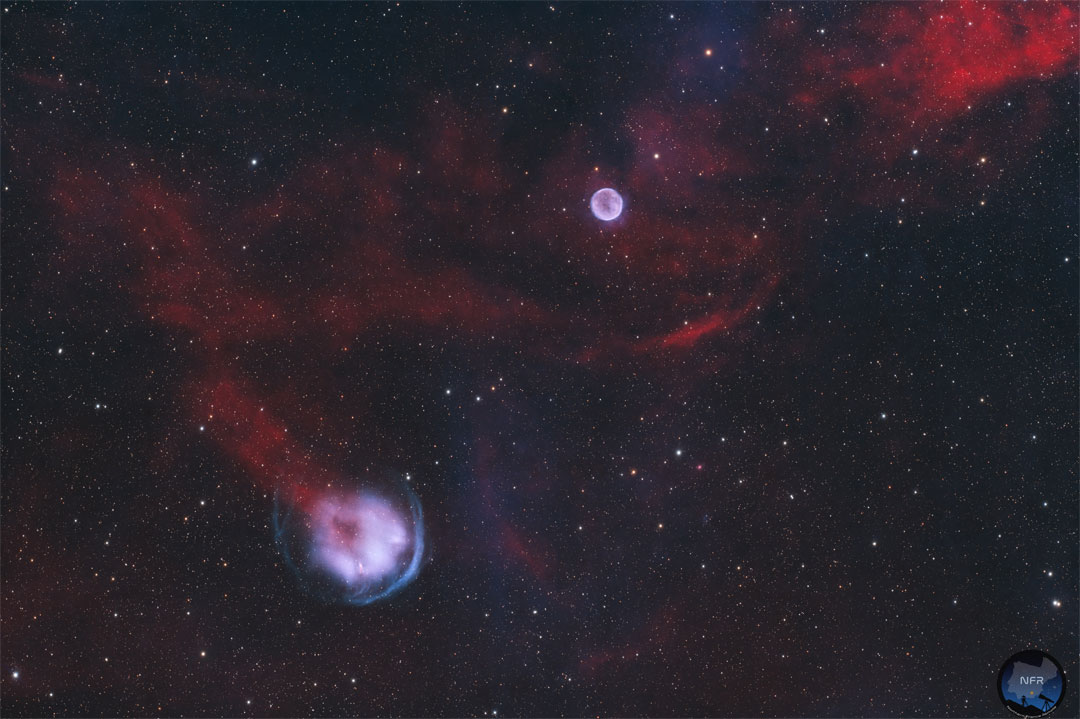
William Henry Deppenschmidt (February 16, 1936 – March 20, 2021) was an American jazz drummer.
Deppenschmidt’s father, a saxophone player, led an orchestra under the name Buddy Williams after playing with and arranging for Paul Whiteman, Jimmy and Tommy Dorsey, and Glenn Miller. When he was four, Deppenschmidt and his mother moved from Philadelphia to Richmond, Virginia.
Self-taught, he started playing drums professionally while in his teens and then went on the road with Ronnie Bartley’s Orchestra, a territory band which travelled in the western U.S. Returning to Richmond, he played with local bands and became the drummer for the Newton Thomas Trio (1954–59) which was also the rhythm section for the Billy Butterfield Quintet. The trio toured with Butterfield throughout the northeast and midwest (1958–59).[3] When the Newton Thomas Trio played the Virginia Beach Jazz Festival, it received rave reviews on a bill that included the Dave Brubeck Quartet and the Charlie Byrd Trio. Two nights later, Charlie Byrd came into the Jolly Roger, the jazz club where Deppenschmidt was playing, and offered him the job as drummer with his trio. He played with the trio at the Showboat Lounge in Washington, D.C. from 1959 to 1962.
Starting in February 1961, the Charlie Byrd Trio (Charlie Byrd, guitar, Keter Betts, bass, and Buddy Deppenschmidt, drums) visited South America, Central America, and Mexico on a goodwill tour sponsored by the U.S. State Department. This three-month cultural exchange included eighteen countries. While in Brazil, Deppenschmidt spent his free time with local musicians, teaching them American jazz and learning bossa nova from them. It was his idea to record an album combining jazz and bossa nova with Stan Getz.
more...William Ballard Doggett (February 16, 1916 – November 13, 1996) was an American pianist and organist. He began his career playing swing music before transitioning into rhythm and blues. Best known for his instrumental compositions “Honky Tonk” and “Hippy Dippy”, Doggett was a pioneer of rock and roll. He worked with the Ink Spots, Johnny Otis, Wynonie Harris, Ella Fitzgerald, and Louis Jordan.
Doggett was born in Philadelphia. During the 1930s and early 1940s he worked for Lucky Millinder, Frank Fairfax and arranger Jimmy Mundy. In 1942 he was hired as the Ink Spots‘ pianist and arranger.
more...Giuseppe “Joe” Venuti (September 16, 1903 – August 14, 1978) was an American jazz musician and pioneer jazz violinist.
Considered the father of jazz violin, he pioneered the use of string instruments in jazz along with the guitarist Eddie Lang, a friend since childhood. Through the 1920s and early 1930s, Venuti and Lang made many recordings as leader and as featured soloists. He and Lang became so well known for their ‘hot’ violin and guitar solos that on many commercial dance recordings they were hired to do 12- or 24-bar duos towards the end of otherwise stock dance arrangements. In 1926, Venuti and Lang started recording for the OKeh label as a duet (after a solitary duet issued on Columbia), followed by “Blue Four” combinations, which are considered milestone jazz recordings. Venuti also recorded commercial dance records for OKeh under the name “New Yorkers”.
He worked with Benny Goodman, Adrian Rollini, the Dorsey Brothers, Bing Crosby, Bix Beiderbecke, Jack Teagarden, Frank Signorelli, the Boswell Sisters, and most of the other important white jazz and semi-jazz figures of the late 1920s and early 1930s. However, following Lang’s death in 1933, Venuti’s career began to wane, though he continued performing through the 1930s, recording a series of commercial dance records (usually containing a Venuti violin solo) for the dime store labels, as well as OKeh and Columbia, plus the occasional jazz small group sessions. He was also a strong early influence on western swing players like Cecil Brower. Many of the 1920s OKeh sides continued to sell and remained in print through 1935 when ARC discontinued the OKeh label and reissued selected sides on the 35-cent Vocalion label (the OKeh label was revived by CBS in 1940).
After a period of relative obscurity in the 1940s and 1950s, Venuti played violin and other instruments with Jack Statham at the Desert Inn Hotel in Las Vegas. Statham headed several musical groups that played at the Desert Inn from late 1961 until 1965, including a Dixieland combo. Venuti was with him during that time, and was active with the Las Vegas Symphony Orchestra during the 1960s. He was ‘rediscovered’ in the late 1960s. In the 1970s, he established a musical relationship with tenor saxophonist Zoot Sims resulting in three recordings. In 1976, he recorded an album of duets with pianist Earl Hinesentitled Hot Sonatas. He also recorded an entire album with country-jazz musicians including mandolinist Jethro Burns (of Homer & Jethro), pedal steel guitarist Curly Chalker and former Bob Wills sideman and guitarist Eldon Shamblin. Venuti died in Seattle, Washington.
more...FANDANGO: For dance it is always fandango de huelva. There are two main types of melodies used for dance, with a final remate they call “por bulerias” but it never felt like buleria to me.
After you figure out how you will structure any falseta or estribillo (chorus that might repeat or go between coplas) and number of basic compases (4 measures usually is one compas) then you have these types of coplas (using the basic compasing for chord you say you know well already)
G7-C (depending on the melody, the C chord change comes right on the 3rd beat of the first measure, or on the 3rd beat of the 3rd measure)
So either beats 1-6, or you have just G7 for beats 1-6, then G7-C for the next 7-12 beats.
The rest is always the same.
C-C (1-6) C7-F (7-12)
F-G7 (1-6) G7-C (7-12)
C-C, C(orD7 passing)-G7
G7-G7, G7-C
C7-F, F-E
So you see the copla is always 6 compases long (or 5 1/2 if you do that short version in the beginning…depends on the melody and it is obvious). If you opt to play copla type falseta (such as the ones PDL does in his guitar solos), be aware they often have an extra 2 compas tag to square things off, so you need to cut those so it is clear 6 compases. And only do the 1/2 compas thing if there is a singer.
The other type of melody is the exact same length, but you go to A major instead of C major:
E7-E7, E7-Amajor
Am (minor)-Am, Am-E7
E7-E7, E7-A (major)
Am-Am, Am-E7
E7-E7, E7-A
Am-F, F-E
